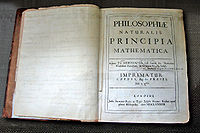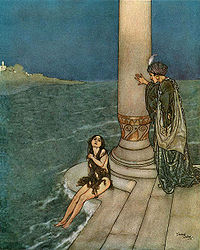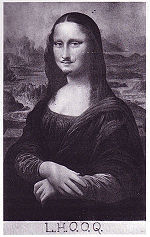Public domain
| Intellectual property law |
| Primary rights |
|---|
|
Copyright • Patent • Trademark • Industrial design right • Utility model • Geographical indication • Trade secret • Authors' rights • Related rights • Moral rights |
| Sui generis rights |
|
Database right • Mask work • Plant breeders' rights • Supplementary protection certificate • Indigenous intellectual property |
| Related topics |
|
Criticism • Orphan works • Public domain • more |
Works are in the public domain if they are not covered by intellectual property rights at all, if the intellectual property rights have expired,[1] and/or if the intellectual property rights are forfeited.[2] Examples include the English language, the formulae of Newtonian physics, as well as the works of Shakespeare and the patents over powered flight.[3]
In a general context public domain may refer to ideas, information and works that are "publicly available", but in the context of intellectual property law, which includes copyright, patents and trademarks, public domain refers to works, ideas, and information which are intangible to private ownership and/or which are available for use by members of the public.[4]
[edit] Defining the public domain

The term public domain did not appear in early copyright law, which was first established in Britain with the Statute of Anne 1709. Though the concept did exist and 18 Century British and French jurists used terms such as publici juris or propriété publique to describe works that were not covered by copyright law.[5] The phrase "fall in the public domain" can be traced to mid 19th Century France to describe the end of copyright term. The French poet Alfred de Vigny equated the expiration of copyright with a work falling "into the sink hole of the public domain"[6] and if the public domain receives any attention from intellectual property lawyers it is still treated as little more than that which is left when intellectual property rights, such as copyright, patents and trademarks, expire or are abandoned.[7] Copyright law was created by statute and all works created and published before copyright law was first established are in the public domain. In this historical context Paul Torremans describes copyright as a "little coral reef of private right jutting up from the ocean of the public domain."[8] Because copyright law is different from country to country Pamela Samuelson has described the public domain as being "different sizes at different times in different countries".[9]
Definitions of the boundaries of the public domain in relation to copyright, or intellectual property more generally, regard the public domain as a negative space, that is, it consist of works that are no longer in copyright term or were never protected by copyright law. More subtle definitions of the public domain move beyond those works that no longer receive legal protection under intellectual property law and incorporates all aspects of works which are not covered by the intellectual property doctrine, such as insubstantial parts of a copyrighted work or the statutory defined permitted acts and exceptions to copyright. A less legalistic definition of the public domain comes from Lange, who focused on what the public domain should be: "it should be a place of sanctuary for individual creative expression, a sanctuary conferring affirmative protection against the forces of private appropriation that threatened such expression".[10] Patterson and Lindberg described the public domain not as a "territory", but rather as a concept: "There are certain materials - the air we breathe, sunlight, rain, space, life, creations, thoughts, feelings, ideas, words, numbers - not subject to private ownership. The materials that compose our cultural heritage must be free for all to use no less than matter necessary for biological survival."[11] The term public domain may also be interchangeably used with other imprecise and/or undefined terms such as the "public sphere" or "commons", including concepts such as "commons of the mind", the "intellectual commons" and the "information commons". [12]

[edit] Value of the public domains
In attempting to map the public domain Pamela Samuelson has identified eight “values” that can arise from information and works in the public domain,[13] though not every idea or work that is in the public domain necessarily has a value.[14] Possible values include:
- Building blocks for the creation of new knowledge, examples include data, facts, ideas, theories and scientific principle.
- Access to cultural heritage through information resources such as ancient Greek texts and Mozart’s symphonies.
- Promoting education, through the spread of information, ideas and scientific principles.
- Enabling follow-on innovation, through for example expired patents and copyright.
- Enabling low cost access to information without the need to locate the owner or negotiate rights clearance and pay royalties, through for example expired copyrighted works or patents, and non-original data compilation.
- Promoting public health and safety, through information and scientific principles.
- Promoting the democratic process and values, through news, laws, regulation and judicial opinion.
- Enabling competitive imitation, through for example expired patents and copyright, or publicly disclosed technologies that do not qualify for patient protection.[15]
[edit] The public domain and derivative works
Derivative works include translations, musical arrangements and dramatizations of a work, as well as other forms of transformation or adaptation.[16] Copyrighted works may not be used for derivative works without permission from the copyright owner,[17] while public domain works can be freely used for derivative works without permission.[18][19] Artworks that are public domain may also be reproduced photographically or artistically or used as the basis of new, interpretive works.[20] Once works enter into the public domain, derivative works such as adaptations in book and film may increase noticeably, as happened with Frances Hodgson Burnett's novel The Secret Garden, which became public domain in 1987.[21] As of 1999, the plays of Shakespeare, all public domain, had been used in more than 420 feature-length films.[22] In addition to straightforward adaptation, they have been used as the launching point for transformative retellings such as Tom Stoppard's Rosencrantz and Guildenstern Are Dead and Troma Entertainment's Tromeo and Juliet.[23][24][25] Marcel Duchamp's L.H.O.O.Q. is a derivative of Leonardo Da Vinci's Mona Lisa, one of thousands of derivative works based on the public domain painting.[26]
[edit] The public domain, traditional knowledge and folklore
Traditional knowledge includes pre-existing, underlying traditional culture, or folklore, and literary and artistic works created by current generations of society which are based on or derived from pre-existing traditional culture or folklore. Traditional culture and folklore tends to be trans-generational, old and collectively "owned" by groups or communities. Often traditional culture and folklore is of anonymous origin and expressions of this pre-existing traditional culture is generally not protected by current intellectual property laws and is treated as being in the public domain.[27] Copyright law, first established for books by the Statute of Anne 1709, is based on the concept of the individual author.[28] In 18th Century Europe written culture was regarded as European, while oral culture was regarded as uncivilised and pre-modern. The concept of "folk-lore" was coined by William Thomas in 1846, describing "knowledge of the people", and in the late 19th Century the fairy tales told by people living in the countryside were collected and published.[29] While oraly transmitted fairytales were not covered by copyright law, and hence in the public domain, 18th century copyright law did apply to written folklore, hence the Borthers Grimm and others who recorded oral folklore owned the copyright on their publications. In the 20th century the concept of authorship was extended to recorded musical works as the phonograph allowed for the fixation of oral transmissions.[30]

The view that folklore and traditional knowledge were in the public domain and free for anybody to use was challanged by the newly independent African and Asian nations of the 1960s, who came under pressure to comply with the 1886 Berne Convention for the Protection of Literary and Artistic Works. African countries regarded folklore to be part of the "cultural heritage of the African nations" and the Tunisian 1966 Copyright Act awarded copyright protection to folklore with the stated aim "to prevent folklore from falling into the hands of third parties who might wish to exploit them for commercial purposes". At the 1967 Stockholm Conference to amend the Berne Convention India raised broader questions of individual authorship, arguing that "...works of folklore might represent the creative efforts of a number of unidentified indigenous authors. They were therefore not only anonymous works in the sense of the... Berne Convention, but also joint works, since in nearly all cases they were unfixed and represented a constantly changing apptern produced by successive performers and authors."[31] As African nations opposed the inclusion of folklore under the "anonymous works" category of the Berne Convention, the Australian delegates conceded that "The whole structure of the Convention was designed to protect the rights of identifyable authors. With a work of folklore there was no such author". Eventually folklore was not integrated into the Berne Convention and therefore its status is not regulated under international copyright law, though countries may cover it in national copyright law.[32]
Contemporary literary and artistic works based upon, derived from or inspired by traditional culture or folklore may incorporate new elements or expressions. These works are generally protected under copyright law as they are regarded as sufficiently original to be "new" upon publication, and they have a living and identifiable creator, or creators. Such contemporary works may include a new interpretation, arrangement, adaptation or collection of pre-existing cultural heritage that is in the public domain. Traditional culture or folklore may also be "repackaged" in digital formats, or restoration and colorization.[33] In the 19th Century the Brothers Grimm and Hans Christian Anderson, three of the most influential collectors of European folklore, published collections of folklore, edited and altered, based on existing folklore and fairy tales. As their works passed into the public domain Walt Disney adapted them into animated film, including Snow White and the Seven Dwarfs (1937), Cinderella (1950) and The Little Mermaid (1989). Disney also adapted folklore from other cultures, such as Aladdin (1992), and the Disney fairy tales are now often the only version known, with the older versions largely unknown.[34]
[edit] The public domain and indigenous people
The public domain, as defined in the context of intellectual property rights, is not a concept recognised by indigenous peoples. As much of traditional knowledge has never been protected under intellectual property rights, they can not be said to have entered any public domain. On this point the Tulalip Tribes of Washington State, United States, has commented that "...open sharing does not automatically confer a right to use the knowledge (of indigenous people)... traditional cultural expressions are not in the public domain because indigenous peoples have failed to take the steps necessary to protect the knowledge in the Western intellectual property system, but form a failure of governments and citizens to recognise and respect the customary laws regulating their use".[35]
[edit] The public domain in the information society
According to Bernt Hugenholtz and Lucie Guibault the public domain is under pressure from the "commodification of information" as items of information that previously had little or no economic value have acquired independent economic value in the information age, such as factual data, personal data, genetic information and pure ideas. The commodification of information is taking place through intellectual property law, contract law, as well as broadcasting and telecommunications law.[36]
[edit] Perpetual copyright
Some works may never fully lapse into the public domain. A perpetual crown copyright is held for the Authorized King James Version of the Bible in the UK.[37] While the copyright of the play Peter Pan, or the Boy Who Wouldn't Grow Up by J. M. Barrie has expired in the United Kingdom, it was granted a special exception under the Copyright, Designs and Patents Act 1988 (Schedule 6)[38] that requires royalties to be paid for performances within the UK, so long as Great Ormond Street Hospital (to whom Barrie gave the rights) continues to exist.
[edit] Public domain in copyrightable works
[edit] Works not covered by copyright law
The underlying idea that is expressed or manifested in the creation of a work generally cannot be the subject of copyright law (see idea-expression divide). Mathematical formulæ will therefore generally form part of the public domain, to the extent that their expression in the form of software is not covered by copyright; however, algorithms can be the subject of a software patent in some jurisdictions.[39][40]
Works created before the existence of copyright and patent laws also form part of the public domain. For example, the Bible and the inventions of Archimedes are in the public domain, but copyright may exist in translations or new formulations of these works.
[edit] Expiration of copyright
The expiration of a copyright is more complex than that of a patent. Historically the United States has specified terms of a number of years following creation or publication; this number has been increased several times. Most other countries specify terms of a number of years following the death of the last surviving creator; this number varies from one country to another (50 years and 70 years are the most common), and has also been increased in many of them. See List of countries' copyright length. Legal traditions differ on whether a work in the public domain can have its copyright restored. Term extensions by the U.S. and Australia generally have not removed works from the public domain, but merely delayed the addition of works to it. By contrast, a European Union directive harmonizing the term of copyright protection was applied retroactively, restoring and extending the terms of copyright on material previously in the public domain.
[edit] Government work
Works of the United States Government and various other governments are excluded from copyright law and may therefore be considered to be in the public domain in their respective countries.[41] In the United States, when copyrighted material is enacted into the law, it enters the public domain. Thus, the building codes, when enacted, are in the public domain.[42] They may also be in the public domain in other countries as well. "It is axiomatic that material in the public domain is not protected by copyright, even when incorporated into a copyrighted work."[43]
[edit] Definition
The definition of public domain is not uniform and may not only include completed works, but also permitted uses of works still covered by intellectual property rights, such as for example the right to excerpt short quotations in a review. This definition divides areas of private property from areas of the public domain. For example, Mozart's plot is public property, and Britney Spears's music is private property.[44]
[edit] Public domain in patents
In most countries the term for patents is 20 years, after which the invention becomes part of the public domain.
[edit] Public domain in trademarks
A trademark registration may remain in force indefinitely, or expire without specific regard to its age. For a trademark registration to remain valid, the owner must continue to use it. In some circumstances, such as disuse, failure to assert trademark rights, or common usage by the public without regard for its intended use, it could become generic, and therefore part of the public domain.
Because trademarks are registered with governments, some countries or trademark registries may recognize a mark, while others may have determined that it is generic and not allowable as a trademark in that registry. For example, the drug "acetylsalicylic acid" (2-acetoxybenzoic acid) is better known as aspirin in the United States—a generic term. In Canada, however, "aspirin" is still a trademark of the German company Bayer. Bayer lost the trademark after World War I, when the mark was sold to an American firm. So many copy-cat products entered the marketplace during the war that it was deemed generic just three years later.[45]
[edit] Generic trademarks
Trademarks currently thought to be in danger of being generic include iPod, Jell-O, Band-Aid, Rollerblade, Google, Spam, Hoover, Xerox, and Sheetrock. Google vigorously defends its trademark rights. Although Hormel resigned itself to genericide,[46] it has fought attempts by other companies to register "spam" as a trademark in relation to computer products.[47]
[edit] Public domain works
Several artists and advocates of the public domain have created projects that call attention to the issue, supporting the free and public use of space and items such as software. Examples include Richard Stallman in his GNU Manifesto and Amy Balkin in her website This is the Public Domain.
- List of countries' copyright length
- List of films in the public domain in the United States
- List of public domain tangos
- Public domain film
- Public domain music
- Public domain software
[edit] See also
- Berne Convention
- Catholic Public Domain Version
- Copyfraud
- Copyleft
- Copyright status of work by the U.S. government
- Copyright Term Extension Act
- Creative Commons
- Creativity techniques
- Cultural environmentalism
- Eldred v. Ashcroft
- Fair dealing
- Fair use
- Free software
- Indigenous intellectual property
- Orphan works
- Public Domain Enhancement Act
- Public Domain (film)
- Public domain image resources
- Rule of the shorter term
- Street Performer Protocol
- Tales from the Public Domain
- The Uneasy Case for Copyright
- Traditional Knowledge Digital Library
- Transaction cost
[edit] References
- ^ Boyle, James (2008). The Public Domain: Enclosing the Commons of the Mind. CSPD. pp. 38. ISBN 0300137400, 9780300137408. http://www.google.com/books?id=Fn1Pl9Gv_EMC&dq=public+domain&source=gbs_navlinks_s.
- ^ Graber, Christoph Beat; and Mira Burri Nenova (2008). Intellectual Property and Traditional Cultural Expressions in a digital environment. Edward Elgar Publishing. pp. 173. ISBN 1847209211, 9781847209214. http://www.google.com/books?id=gK6OI0hrANsC&dq=%22public+domain%22+intellectual+property&lr=&as_brr=3&source=gbs_navlinks_s.
- ^ Boyle, James (2008). The Public Domain: Enclosing the Commons of the Mind. CSPD. pp. 38. ISBN 0300137400, 9780300137408. http://www.google.com/books?id=Fn1Pl9Gv_EMC&dq=public+domain&source=gbs_navlinks_s.
- ^ Graber, Christoph Beat; and Mira Burri Nenova (2008). Intellectual Property and Traditional Cultural Expressions in a digital environment. Edward Elgar Publishing. pp. 173. ISBN 1847209211, 9781847209214. http://www.google.com/books?id=gK6OI0hrANsC&dq=%22public+domain%22+intellectual+property&lr=&as_brr=3&source=gbs_navlinks_s.
- ^ Torremans, Paul (2007). Copyright law: a handbook of contemporary research. Edward Elgar Publishing. pp. 134-135. ISBN 9781845424879. http://books.google.com/books?id=wHJBemWuPT4C&dq=%22perpetual+copyright%22&source=gbs_navlinks_s.
- ^ Torremans, Paul (2007). Copyright law: a handbook of contemporary research. Edward Elgar Publishing. pp. 154. ISBN 9781845424879. http://books.google.com/books?id=wHJBemWuPT4C&dq=%22perpetual+copyright%22&source=gbs_navlinks_s.
- ^ Ronan, Deazley (2006). Rethinking copyright: history, theory, language. Edward Elgar Publishing. pp. 103. ISBN 9781845422820. http://www.google.com/books?id=dMYXq9V1JBQC&dq=statute+of+anne+copyright&lr=&as_brr=3&source=gbs_navlinks_s.
- ^ Torremans, Paul (2007). Copyright law: a handbook of contemporary research. Edward Elgar Publishing. pp. 137. ISBN 9781845424879. http://books.google.com/books?id=wHJBemWuPT4C&dq=%22perpetual+copyright%22&source=gbs_navlinks_s.
- ^ Ronan, Deazley (2006). Rethinking copyright: history, theory, language. Edward Elgar Publishing. pp. 102. ISBN 9781845422820. http://www.google.com/books?id=dMYXq9V1JBQC&dq=statute+of+anne+copyright&lr=&as_brr=3&source=gbs_navlinks_s.
- ^ Ronan, Deazley (2006). Rethinking copyright: history, theory, language. Edward Elgar Publishing. pp. 104. ISBN 9781845422820. http://www.google.com/books?id=dMYXq9V1JBQC&dq=statute+of+anne+copyright&lr=&as_brr=3&source=gbs_navlinks_s.
- ^ Ronan, Deazley (2006). Rethinking copyright: history, theory, language. Edward Elgar Publishing. pp. 105. ISBN 9781845422820. http://www.google.com/books?id=dMYXq9V1JBQC&dq=statute+of+anne+copyright&lr=&as_brr=3&source=gbs_navlinks_s.
- ^ Ronan, Deazley (2006). Rethinking copyright: history, theory, language. Edward Elgar Publishing. pp. 103. ISBN 9781845422820. http://www.google.com/books?id=dMYXq9V1JBQC&dq=statute+of+anne+copyright&lr=&as_brr=3&source=gbs_navlinks_s.
- ^ Guibault, Lucy; & Bernt Hugenholtz (2006). The future of the public domain: identifying the commons in information law. Kluwer Law International. pp. 22. ISBN 9041124357, 9789041124357. http://www.google.com/books?id=KJmNGglq0nwC&dq=public+domain&lr=&as_brr=3&source=gbs_navlinks_s.
- ^ Guibault, Lucy; & Bernt Hugenholtz (2006). The future of the public domain: identifying the commons in information law. Kluwer Law International. pp. 23. ISBN 9041124357, 9789041124357. http://www.google.com/books?id=KJmNGglq0nwC&dq=public+domain&lr=&as_brr=3&source=gbs_navlinks_s.
- ^ Guibault, Lucy; & Bernt Hugenholtz (2006). The future of the public domain: identifying the commons in information law. Kluwer Law International. pp. 22. ISBN 9041124357, 9789041124357. http://www.google.com/books?id=KJmNGglq0nwC&dq=public+domain&lr=&as_brr=3&source=gbs_navlinks_s.
- ^ Stern, Prof Richard H. (2001). "L.H.O.O.Q. Internet related Derivative Works". Supplemental material Computer Law 484. The George Washington University Law School. http://docs.law.gwu.edu/facweb/claw/Lhooq0.htm. Retrieved 23 May 2010.
- ^ Leaffer, Marshall A. (1995). Understanding copyright law. Legal text series; Contemporary Casebook Series (2nd ed.). M. Bender. p. 46. ISBN 0256164487.
- ^ Introduction to intellectual property: theory and practice. Wold Intellectual Property Organisation, Kluwer Law International. 1997. pp. 313. ISBN 9789041109385. http://www.google.com/books?id=n7DkfPpwLbEC&dq=adaptation+public+domain+disney&lr=&source=gbs_navlinks_s.
- ^ Fishman, Stephen (September 2008). The copyright handbook: what every writer needs to know. Nolo. p. 178. ISBN 9781413308938. http://books.google.com/books?id=qlsvhw6O7koC&pg=PA178. Retrieved 1 June 2010.
- ^ Fishman, Stephen (2008). Public domain: how to find and use copyright-free writings, music, art and more. Nolo. pp. 124-125. ISBN 9781413308587. http://books.google.com/books?id=fRY4QBpLFGQC&dq=L.H.O.O.Q.+copyright+%22public+domain%22&source=gbs_navlinks_s.
- ^ Lundin, Anne H. (2 August 2004). Constructing the canon of children's literature: beyond library walls and ivory towers. Routledge. p. 138. ISBN 9780815338413. http://books.google.com/books?id=72flittye58C&pg=PA138. Retrieved 1 June 2010.
- ^ Young, Mark (ed.). The Guinness Book of Records 1999, Bantam Books, 358; Voigts-Virchow, Eckartm (2004), Janespotting and Beyond: British Heritage Retrovisions Since the Mid-1990s, Gunter Narr Verlag, 92.
- ^ Homan, Sidney (2004). Directing Shakespeare: a scholar onstage. Ohio University Press. p. 101. ISBN 9780821415504. http://books.google.com/books?id=EM0n1ueBa_sC&pg=PT101. Retrieved 1 June 2010.
- ^ Kossak, Saskia (2005). "Frame my face to all occasions": Shakespeare's Richard III on screen. Braumüller. p. 17. ISBN 9783700314929. http://books.google.com/books?id=-PNZAAAAMAAJ. Retrieved 1 June 2010.
- ^ Cartmell, Deborah; Imelda Whelehan (2007). The Cambridge companion to literature on screen. Cambridge University Press. p. 69. ISBN 9780521614863. http://books.google.com/books?id=fhJNFc1f0DAC&pg=PA69. Retrieved 1 June 2010.
- ^ Introduction to intellectual property: theory and practice. Wold Intellectual Property Organisation, Kluwer Law International. 1997. pp. 313. ISBN 9789041109385. http://www.google.com/books?id=n7DkfPpwLbEC&dq=adaptation+public+domain+disney&lr=&source=gbs_navlinks_s.
- ^ Graber, Christoph Beat; and Mira Burri Nenova (2008). Intellectual Property and Traditional Cultural Expressions in a digital environment. Edward Elgar Publishing. pp. 173–174. ISBN 1847209211, 9781847209214. http://www.google.com/books?id=gK6OI0hrANsC&dq=%22public+domain%22+intellectual+property&lr=&as_brr=3&source=gbs_navlinks_s.
- ^ Beat Graber, Christoph; & Burri Nenova, Mira (2008). Intellectual Property and traditional cultural expressions in a digital environment. Edward Elgar Publishing. pp. 6. ISBN 9781847209214. http://books.google.com/books?id=gK6OI0hrANsC&dq=folklore+copyright+18+century&source=gbs_navlinks_s.
- ^ Beat Graber, Christoph; & Burri Nenova, Mira (2008). Intellectual Property and traditional cultural expressions in a digital environment. Edward Elgar Publishing. pp. 5. ISBN 9781847209214. http://books.google.com/books?id=gK6OI0hrANsC&dq=folklore+copyright+18+century&source=gbs_navlinks_s.
- ^ Beat Graber, Christoph; & Burri Nenova, Mira (2008). Intellectual Property and traditional cultural expressions in a digital environment. Edward Elgar Publishing. pp. 7. ISBN 9781847209214. http://books.google.com/books?id=gK6OI0hrANsC&dq=folklore+copyright+18+century&source=gbs_navlinks_s.
- ^ Beat Graber, Christoph; & Burri Nenova, Mira (2008). Intellectual Property and traditional cultural expressions in a digital environment. Edward Elgar Publishing. pp. 10-11. ISBN 9781847209214. http://books.google.com/books?id=gK6OI0hrANsC&dq=folklore+copyright+18+century&source=gbs_navlinks_s.
- ^ Beat Graber, Christoph; & Burri Nenova, Mira (2008). Intellectual Property and traditional cultural expressions in a digital environment. Edward Elgar Publishing. pp. 11. ISBN 9781847209214. http://books.google.com/books?id=gK6OI0hrANsC&dq=folklore+copyright+18+century&source=gbs_navlinks_s.
- ^ Graber, Christoph Beat; and Mira Burri Nenova (2008). Intellectual Property and Traditional Cultural Expressions in a digital environment. Edward Elgar Publishing. pp. 174. ISBN 1847209211, 9781847209214. http://www.google.com/books?id=gK6OI0hrANsC&dq=%22public+domain%22+intellectual+property&lr=&as_brr=3&source=gbs_navlinks_s.
- ^ Young, Terrell A. (2004). Happily ever after: sharing folk literature with elementary and middle school students. International Reading Assoc.. pp. 166-169. ISBN 9780872075108. http://www.google.com/books?id=m1ytmBVR0sUC&dq=walt+disney+fairy+tales+adaptations&lr=&as_brr=3&source=gbs_navlinks_s.
- ^ Graber, Christoph Beat; and Mira Burri Nenova (2008). Intellectual Property and Traditional Cultural Expressions in a digital environment. Edward Elgar Publishing. pp. 174. ISBN 1847209211, 9781847209214. http://www.google.com/books?id=gK6OI0hrANsC&dq=%22public+domain%22+intellectual+property&lr=&as_brr=3&source=gbs_navlinks_s.
- ^ Guibault, Lucy; & Bernt Hugenholtz (2006). The future of the public domain: identifying the commons in information law. Kluwer Law International. pp. 1. ISBN 9041124357, 9789041124357. http://www.google.com/books?id=KJmNGglq0nwC&dq=public+domain&lr=&as_brr=3&source=gbs_navlinks_s.
- ^ (Coogan & Metzger 1993, p. 618)
- ^ "Copyright, Designs and Patents Act 1988 (c. 48)". Office of Public Sector Information. 1988. p. 28. http://www.opsi.gov.uk/acts/acts1988/Ukpga_19880048_en_28.htm. Retrieved September 2, 2008.
- ^ Patentability of Mathematical Algorithms under US Manual of Patent Examining Procedure
- ^ USPTO Notice of Public Hearings and Request for Comments on Patent Protection for Software-Related Inventions 1994
- ^ Copyright Office Basics
- ^ http://en.wikisource.org/wiki/Veeck_v._Southern_Building_Code_Congress_Int'l,_Inc./Opinion_of_the_Court
- ^ Nimmer, Melville B., and David Nimmer (1997). Nimmer on Copyright, section 13.03(F)(4). Albany: Matthew Bender.
- ^ Boyle, James (2008). The Public Domain: Enclosing the Commons of the Mind. CSPD. pp. 38. ISBN 0300137400, 9780300137408. http://www.google.com/books?id=Fn1Pl9Gv_EMC&dq=public+domain&source=gbs_navlinks_s.
- ^ Aspirin, World of Molecules
- ^ SPAM and the Internet (Waybacked)
- ^ Kieren McCarthy (January 31, 2005). "Hormel Spam trademark case canned". http://www.theregister.co.uk/2005/01/31/spam_ruling/. Retrieved September 2, 2008.
[edit] External links
| Look up public domain in Wiktionary, the free dictionary. |
- Public Domain Calculators for Various Countries
- Flowchart to determine Public Domain status of a work in the U.S.
- Public Domain Dedication
- Public Domain Works - an open registry of artistic works that are in the public domain
- Stanford Copyright Renewal Database
- Catalog of Copyright Entries Information
- GNU.org
|
|||||||||||||||||

